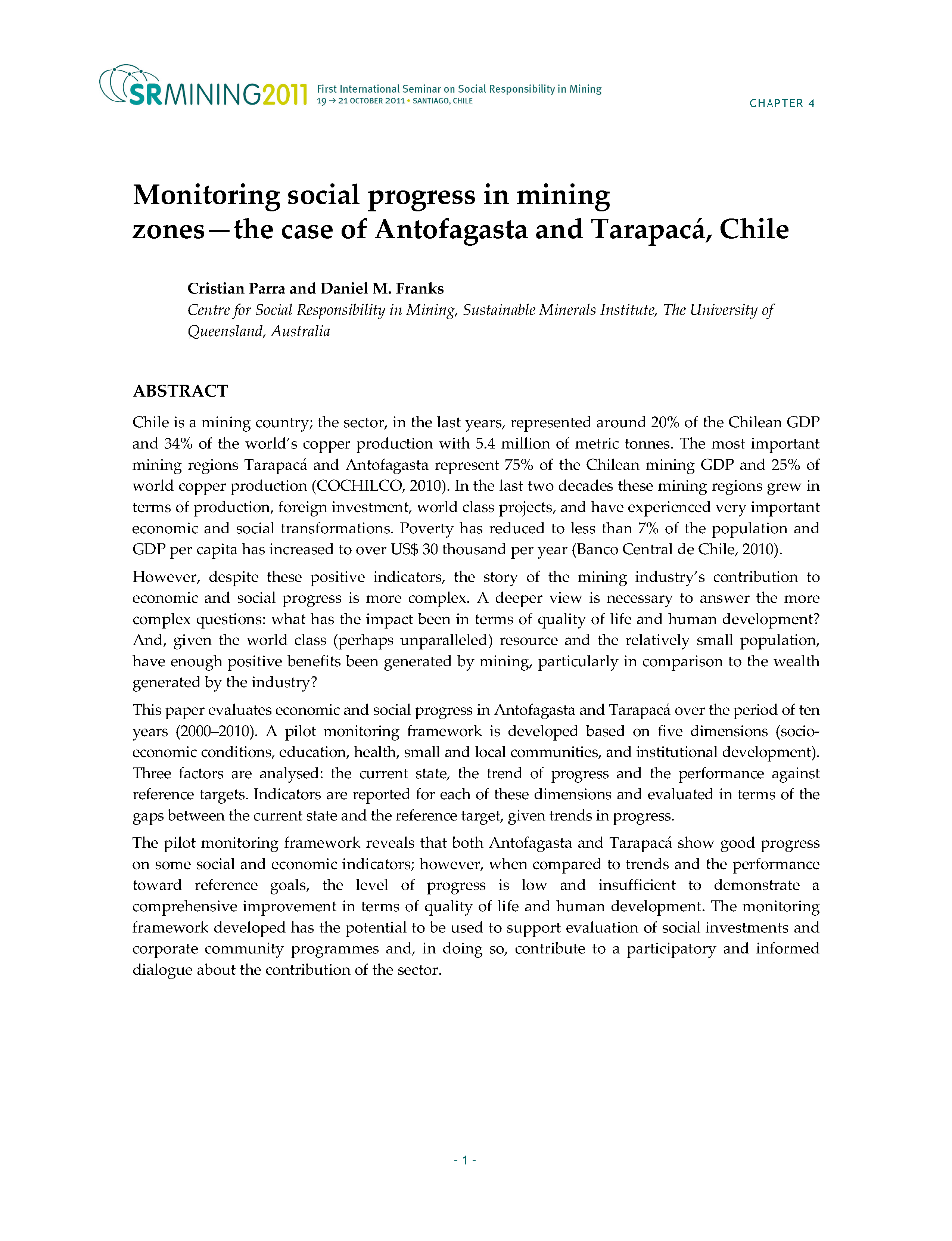Monitoring social progress in mining zones
Chile is a mining country; the sector, in the last years, represented around 20% of the Chilean GDP and 34% of the world's copper production with 5.4 million of metric tonnes. The most important mining regions Tarapacá and Antofagasta represent 75% of the Chilean mining GDP and 25% of world copper production (COCHILCO, 2010). In the last two decades these mining regions grew in terms of production, foreign investment, world class projects, and have experienced very important economic and social transformations. Poverty has reduced to less than 7% of the population and GDP per capita has increased to over US$ 30 thousand per year (Banco Central de Chile, 2010). However, despite these positive indicators, the story of the mining industry's contribution to economic and social progress is more complex. A deeper view is necessary to answer the more complex questions: what has the impact been in terms of quality of life and human development? And, given the world class (perhaps unparalleled) resource and the relatively small population, have enough positive benefits been generated by mining, particularly in comparison to the wealth generated by the industry? This paper evaluates economic and social progress in Antofagasta and Tarapacá over the period of ten years (2000-2010). A pilot monitoring framework is developed based on five dimensions (socioeconomic conditions, education, health, small and local communities, and institutional development). Three factors are analysed: the current state, the trend of progress and the performance against reference targets. Indicators are reported for each of these dimensions and evaluated in terms of the gaps between the current state and the reference target, given trends in progress. The pilot monitoring framework reveals that both Antofagasta and Tarapacá show good progress on some social and economic indicators; however, when compared to trends and the performance toward reference goals, the level of progress is low and insufficient to demonstrate a comprehensive improvement in terms of quality of life and human development. The monitoring framework developed has the potential to be used to support evaluation of social investments and corporate community programmes and, in doing so, contribute to a participatory and informed dialogue about the contribution of the sector.
Publisher: SR Mining 2011
Region: South America
Type: Conference Paper
CITATION
Parra, C. & Franks, D. 2011. Monitoring social progress in mining zones

